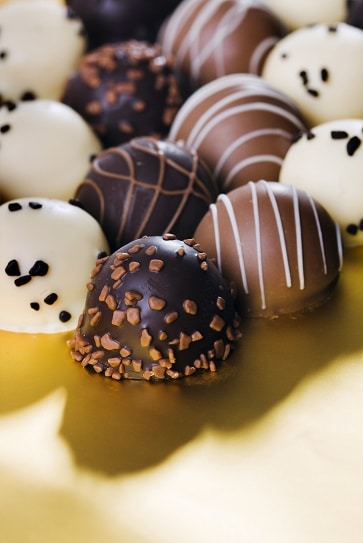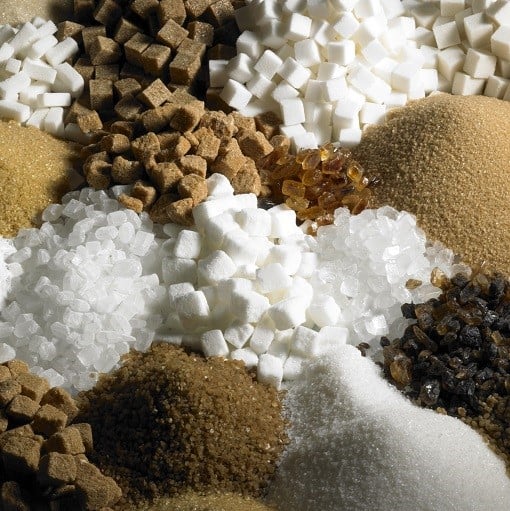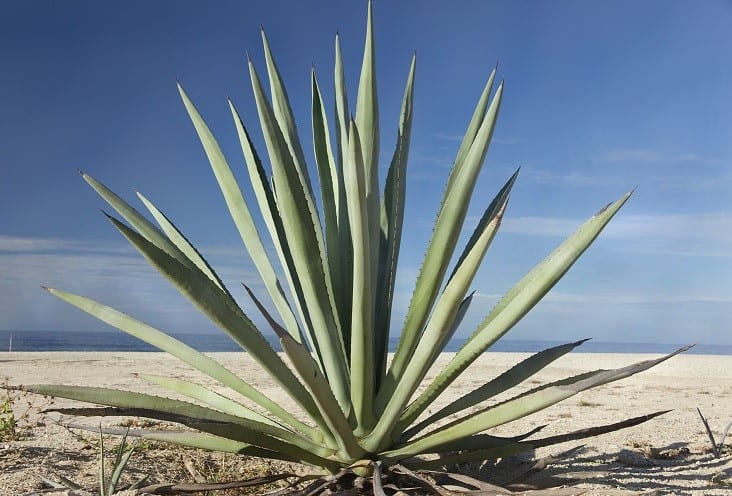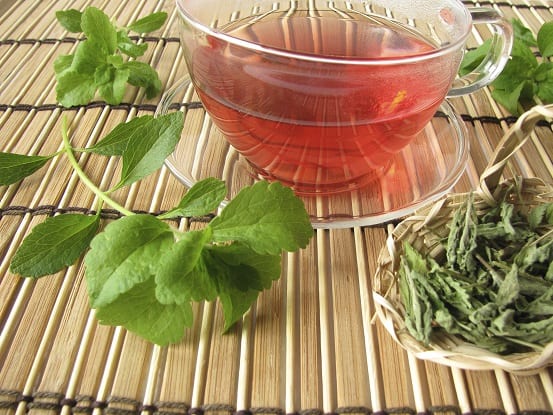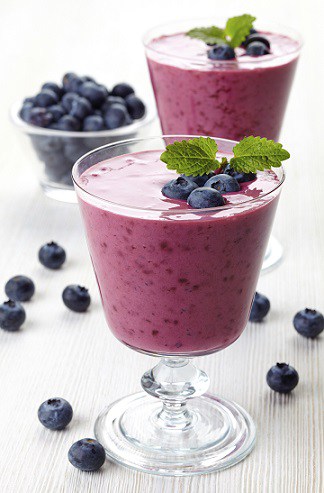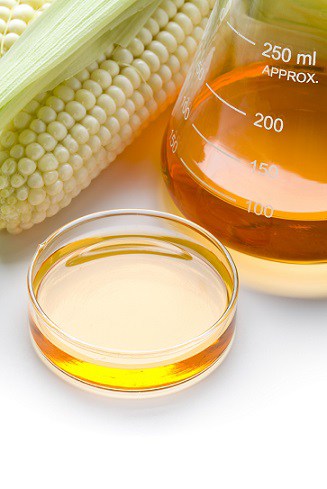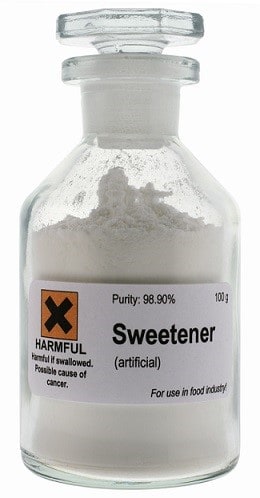Sugar is the most demonised nutritional substance in the world right now, and for good reason. At the levels we currently eat sugar, it’s destroying our health. The average American now wolfs down an astonishing 3 pounds of sugar per week, making for 200 grams a day of totally empty calories.
It’s not just tooth decay, as sugar messes you up in all sorts of obscure ways, such as inhibiting Brain Derived Neurotrophic Factor, a critical substance for the formation of new neurons and preventing Alzheimer’s disease.
Sugar directly activates a “fat switch” that causes your metabolism to pack on pounds instead of burning them. It doesn’t end there.
If you’re a regular reader here, then you’ll know that sugar is an acne causing nightmare as well. It increases inflammation by over 100%, and leads to insulin resistance and oily skin…
…but you’ll also know that eliminating sugar entirely is impossible. The most nutritious, antioxidant-packed fruits and vegetables all contain natural sugars.
What’s more, 50 grams of sugar per day is perfectly acne-friendly. With a few simple tactics, you can sprinkle small amounts in tea, coffee, and homemade chocolate and still enjoy a sweet treat once in a while.
Today then, you will learn how to do exactly that. We will discuss the endless alternative sweeteners currently springing onto the market.
What you need for acne
For all of the pleasure but none of the acne, your sweetener must fulfil three broad criteria.
ONE – a healthy fructose to glucose ratio. They’re the two main sugars in nature, as all plant-derived foods contain fructose and glucose in varying ratios. Both trigger inflammation when eaten in excess, but fructose has the double danger of overloading the liver, turning to fat, and impairing the liver’s functioning. The result is insulin resistance, and higher insulin in your bloodstream.
Read Annihilate Your Acne – get the ultimate diet and clear your acne permanently!
Therefore, less fructose is always preferable for a sweetener. A fructose to glucose ratio higher than 60:40 is always a fast approaching acne minefield.
TWO – a lower glycaemic index. The post meal (post-prandial) blood sugar spike is less important for acne than you might have read, as the real key is long term blood sugar (and insulin). But that said, a sweetener that rapidly digests into floods of glucose will still give you oilier skin for several hours, while increasing bloodstream free radicals called AGEs. Rapid digestion also increases the inflammatory response. The lower the GI, the better a sweetener for acne.
THREE – free from other contaminants. An unskippable feature. You don’t want your sweetener to be laced with pesticides, herbicides, flow agents, moisture absorbers, or chemical solvents used in the industrial extraction.
Then there’s the new-fangled, untested sweeteners. For example, are zero calorie sweeteners too good to be true (scroll down to find out)? The ideal acne sweetener will have bonus natural compounds such as antioxidants and trace nutrients.
Onto the sweeteners:
White sugar

What is it? It’s a frenemy you know and love: the refined table sugar found in kitchens everywhere. White sugar is extracted from either the sugar beet grown widely in Europe, or the sugar cane plant of Jamaica and the Caribbean. The plant is crushed, and the juice is extracted, which is heated to remove crystals, before being spun in a centrifuge to remove the dark molasses and yield pure sugar crystals. If the crystals aren’t white enough then a white dye is added.
Is it safe for acne? Definitely not, except in small doses. White sugar, AKA table sugar or sucrose, is a very poor sweetener. At 50:50, the fructose to glucose ratio is perfectly safe, but every last atom of fiber is striped away by the refinement process. The digestion is almost instantaneous, and consequently, white sugar has a GI of 60. That’s why a sugary chocolate bar makes your skin oily almost instantly.
Recommended – the top 6 vitamins and minerals for acne-free skin
It’s double the trouble, because this refinement strips away any antioxidants, leaving nothing to counteract the AGE free radicals created by higher blood sugar.
Nearly all sugar cane is genetically modified in the US, and the goal is for the crop to withstand higher amounts of the herbicide glyphosate, a massive villain behind impoverished friendly gut bacteria (as discussed in my eBook). Sugar crops reportedly take up even higher amounts of glyphosate than other plants.
The verdict? White sugar represents the acne-causing powers of sugar in their purest form.
Brown sugar
What is it? It’s the cheap brown version of table sugar available at all grocery stores, which is obstinately less refined than white sugar. Decades ago, brown sugar was simply raw sugar crystals without the molasses being removed by a centrifuge. Nowadays, most brown sugar is white sugar with the molasses added back in. It can be purchased in a variety of colours, from light brown to near chocolate intensity.
The darker the brown sugar, the more molasses it contains. Light brown contains 3.5%, while dark brown reaches 6.5%. This also makes brown sugar moister, and affects the taste slightly.
Is it safe for acne? It’s not harmless, but it’s superior to white sugar. The fructose/glucose ratio is identical, but the molasses reintroduce some much needed antioxidants, which will slightly counteract the AGE free radicals caused by the blood sugar spike.
This study found that despite its modest antioxidants, brown sugar still had “interesting free radical scavenging properties”. This study compared several sweeteners, and found intermediate antioxidant capacity in brown sugar, which matched even honey, which is far more complex.
The top 7 topical treatments for clearing acne naturally
The blood sugar spike is mellower too, due to small amounts of fiber. What increase it does cause will be softened by the antioxidants.
Brown sugar is also touted as having trace minerals, but overall, it’s a nutritional wasteland just like white sugar. The molasses have traces of vitamin B3, vitamin B6, B9, potassium, and magnesium, but the amounts are miniscule. The dangers of glyphosate remain, since it still comes from the sugar cane plant.
That said, brown sugar is slightly more acne-friendly than white sugar. They’re equally cheap, so if you don’t have the coin for fancy natural sweeteners, then get brown sugar.
Agave nectar
What is it? A sugar-based sweetener that claims to be natural and is surging in popularity as a health product. Claimed to spike blood sugar less and be healthier for diabetics. Other claims include being “bursting with vitamins and minerals”, “rich in antioxidants”, and a “100% natural sugar alternative”. Sourced from the agave plant of Mexico, used by Native Americans for cleansing wounds and other medicinal purposes for hundreds of years.
Is it safe for acne? Definitely not! Agave nectar is arguably the biggest health fraud of the last 10 years. Almost every claim you’ll read is a lie.
Agave nectar does have a relatively low glycaemic index, but for all the wrong reasons. The jars on grocery store shelves contain 85% fructose and 15% glucose. That’s an abominable ratio for acne.
It’s far worse than the feared high fructose corn scrip, at roughly 60:40. The scientific name does all the explaining: “hydrolysed high fructose inulin syrup”.
Why bread and pasta are a massive cause of acne
Agave nectar isn’t sap squeezed straight from a desert plant as the adverts suggest. Instead, it undergoes extensive factory processing. In scorching heat, its predominant inulin fibers break down into colossal quantities of fructose molecules.
If you’re interested in the true agave, then buy miel de agave. This is the original sap which Mexicans enjoyed for hundreds of years, not the processed rubbish commonly available. Miel de agave is rare and expensive, but certain Whole Foods shops sell it.
Raw honey
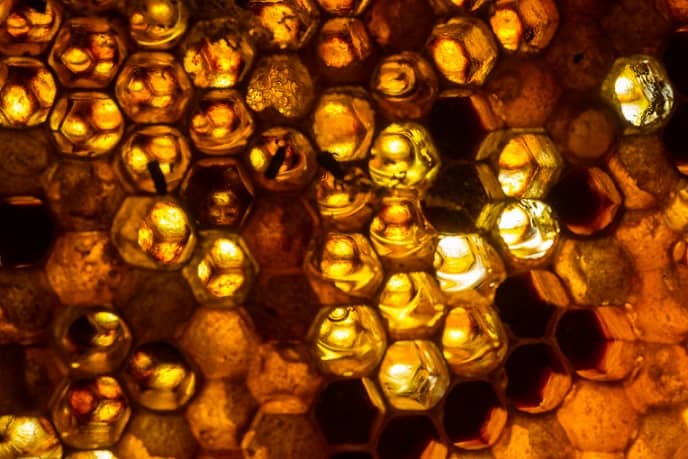
What is it? A natural sweetener manufactured by bees, using nectar from flowers. This is raw honey, the unheated version straight from the hive, as opposed to nutritionally dead pasteurised honey.
Is it safe for acne? Raw honey is the greatest sweetener for an acne patient ever. It’s still a sugary syrup, but it’s accompanied by tons of healthy compound like bee-defensin 1, antioxidants and methylgyloxal.
Despite being over 80% sugar, honey can actually improve insulin sensitivity and reduce inflammation. Raw honey is linked to sharper immune system functioning; stories speak of a common cold melting away into nothingness after a single blob.
The fructose is slightly above 50% of total sugars (good), and according to this study, raw honey is blood sugar neutral.
My own experiences back this up, as compared to a sugary chocolate bar, the classic post-carb energy crash always seems to be small with raw honey. Honey also contains a plethora of antioxidants; this and this study noticed higher bloodstream antioxidants after eating buckwheat honey.
Why using raw honey could revolutionise your skin
There’s only one road to acne here: if you have an allergy to products derived from the bee kingdom. Buying your honey raw is critical, because the health-giving antioxidants and enzymes are very delicate in the face of heat. Raw honey was the predominant sweetener of the European Middle ages, before the sugar cane industry exploded in the newly colonised Caribbean.
Raw honey is your number one recommended sweetener for acne and health. My recommended jar is the 22oz Y.S. Eco Bee Farms Raw Honey (amazon link).
Stevia
What is it? Stevia is a zero calorie sweetener derived from the stevia rebaudiana plant. It’s beloved by paleo and primal communities, and increasingly by the general public, for providing the sweet taste of sugar without actually containing sugar.
Stevia contains glycosides like rebaudiosides and steviosides, rare plant compounds which bind to your tongue’s sweet receptors just like sugar. Rebaudiosides and steviosides are 350 and 250 times sweetener than sugar respectively. In 2015, stevia sales increased by 14%. The best selling product is Truvia, sold by Cargill and the Coca Cola Company.
Is it safe for acne? Stevia is safe for occasional usage, but over the long term, the signs are grim. When the sweet receptors on our tongues are stimulated, this sends one message to our bodies: that sugar is incoming. To prepare for the expected blood sugar surge, your body increases insulin, to convert the glucose into glycogen and store it as energy…
…but that flood of glucose never comes with stevia. So instead, insulin lowers your blood sugar dramatically for no reason, and to resolve the hypoglycaemic state you now find yourself in your body increases its cortisol production, to suck replacement glucose from your energy stores.
Vitamin E – the ultimate nutrient for clogged pores
That’s dire news for acne, seeing as cortisol is the main stress hormone. Stevia causes a large spike in this acne-causing villain, and all the weak skin associated with it.
Over the long term, your body will adapt to the glycosides in stevia, and no longer pump out insulin when sugar isn’t coming. Unfortunately, it also decouples sweet tastes from actual sugar, meaning that whenever you eat a healthy apple, or a bowl of yogurt, your ability to secrete insulin and deal with the glucose increase is severely impaired. Your blood sugar remains higher for longer, with more opportunity to unleash acne. That applies to every single sugary food you eat!
For those reasons, I strongly recommend against eating stevia regularly. Occasional usage is safe, unless you suffer from chronic stress and cannot withstand an extra cortisol spike.
Erythritol
What is it? Another zero calorie sweetener, this time a sugar alcohol, which are hybrids of carbohydrates and alcohols. Erythritol is closely related to kitchen staples like sorbitol, xylitol and maltitol. Erythritol is popular for one reason: having only 0.24 calories per gram. It has 6% of the calories of sugar, but 70% of the sweetness. Truvia, the best selling stevia product and 2nd best selling branded sweetener in all of America, actually contains erythritol as its main sweetener.
Is it safe for acne? Erythritol is identical to stevia – it’s safe occasionally, but can decouple your sugar responses if you make it a habit.
Otherwise, erythritol is very safe. Many humans can’t digest sugar alcohols properly but this study noticed very few side effects from erythritol. Only massive doses cause harm, according to this study where 50 grams of erythritol triggered nausea and stomach rumbling in some patients. This study found that “the repeated ingestion of erythritol at daily doses of 1 g/kg body weight was well tolerated by humans“.
There’s few other problems to speak of. Erythritol lacks any bonus nutritional compounds, unlike the natural stevia and honey, but it’s safe for acne when used occasionally.
Coconut sugar
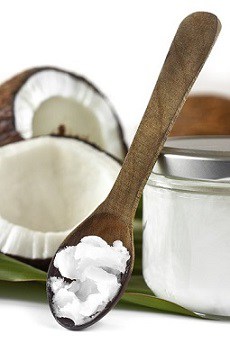
What is it? Coconut sugar, also known as coconut palm sugar, is made from the circulating sap of the coconut plant. This raw juice is evaporated to leave behind brown-coloured sugar crystals.
Is it safe for acne? Coconut sugar is undoubtedly a pure marketing gimmick, launched to take advantage of the explosive popularity of coconut products (like coconut oil and coconut flour). Nevertheless, it’s leagues beyond agave nectar for acne safety.
Coconut sugar contains small amounts of fiber and minerals which delay its digestion, giving it a lower glycaemic index than white cane sugar (study). In fact, coconut sugar’s fiber is a particularly healthy type called inulin. One study found the GI of white table sugar to be 60 versus 35 for coconut sugar. Coconut sugar also has a superior sugar ratio, as only 40% are estimated to be fructose (study).
Zinc – the supplement that can slash acne by up to 49.8%!
Despite all things coconut being advertised as superfoods, there’s no evidence of remarkable benefits from coconut sugar. It lacks the more fascinating nutritional compounds of honey, but that said, there are nice traces of zinc, calcium, and potassium, along with short chain fatty acids, polyphenols, and antioxidants. Coconut sugar easily outdoes white sugar and brown sugar for acne. It contains less contaminants such as glyphosate as well.
High fructose corn syrup
What is it? HFCS is a sugar-based sweetener that burst into life due to pure economics. Farmers receiving corn subsidies once had so much lying around in piles that they invented a factory process to extract sugar from them. HFCS consumption skyrocketed during the 1970s, and rose more gradually until the year 2000.
Because of its cheapness, HFCS pops up everywhere, from hot dogs to protein shakes, to cookies and milk chocolate. 55% of sweeteners are now made from corn starch.
Is it safe for acne? No! HFCS is second only to agave nectar in the ranks of acne-causing nightmares. The name reveals the truth – a dire glucose to fructose ratio of approximately 45:55. The raw corn starch is actually mostly glucose, but factory processes convert some of the molecules to fructose to make the syrup sweetener. One brand available, called HFCS 90, contains 90% fructose.
Possibly the worst aspect of high fructose corn syrup is its heavy glyphosate contamination. Like sugar, corn is genetically modified to withstand higher amounts of pesticides, but humans haven’t been afforded the same benefit. There’s no nutrition in HFCS either, with any remaining fiber obliterated in the factory. Consequently, there’s nothing to slow down the rapid digestion and blood sugar spike.
The good news is that dodging HFCS is simple. You just need to avoid processed foods, and that’s what I recommend to all acne patients (except for cheat days).
Aspartame
What is it? A highly controversial sweetener, often denoted as E951. While stevia is naturally derived, aspartame is purely unnatural. Aspartame was approved for food in the 1980s, and was originally sold under the brand name NutraSweet. Like stevia, aspartame stimulates sweet receptors on the taste buds without actually containing any sugar. Top sources include soft drinks, such as Coca Cola, energy drinks and fruit squash.
Is it safe for acne? The same rules apply as with stevia and erythritol – regular aspartame usage will decouple your normal digestive responses and make any food containing sugar harder to digest. That’s why zero calorie sweeteners are consistently linked to obesity and diabetes.
Furthermore, aspartame is an excitotoxin. These villains overstimulate your nerve cells to the point of breaking down and dying. Studies on excitotoxins like the notorious MSG have noticed nausea and abdominal pain, the kind of digestive problems widely linked to acne outbreaks.
Then there’s aspartame’s great skill in crippling the rest of your health. Symptoms in scientific studies include: vertigo, seizures, vision problems, cancer, autism, Alzheimer’s, mental retardation, hearing loss, numbness, muscle spasms, heart palpitations and anxiety.
So your answer is: avoid aspartame and rely on all-natural sweeteners like honey. Like HFCS, aspartame lives mostly in processed foods, especially soft drinks and sports energy drinks.
Conclusion
The final word on the matter of sweeteners is that raw honey rules the roost for acne patients with ease. Coconut sugar finishes up at second. Agave nectar is a walking nightmare and the most overrated superfood of all time.
No matter how acne-friendly a sweetener is, it can still unleash pimples when eaten in excess. Honey and coconut sugar are still nearly 100% sugar. They’ll still massively increase inflammation if you go nuts and stuff your face with them, under the impression that they’re totally safe…
…but if you’re looking to push your homemade treats to the maximum of acne nutrition, use the guide above. For example, I occasionally make homemade dark chocolate using a special acne-friendly recipe, and the sweetener is always raw honey.
Cocoa is packed with antioxidants, and by using raw honey, you can whip up a tasty bombshell of antioxidants.
NEXT: get the complete strategy for clearing acne naturally
Thanks for reading!
